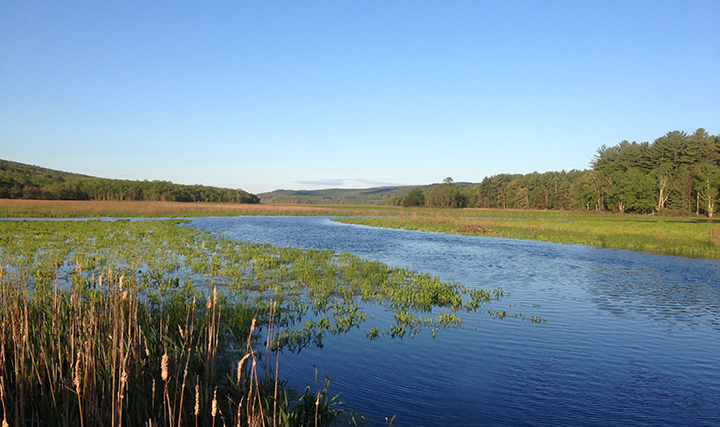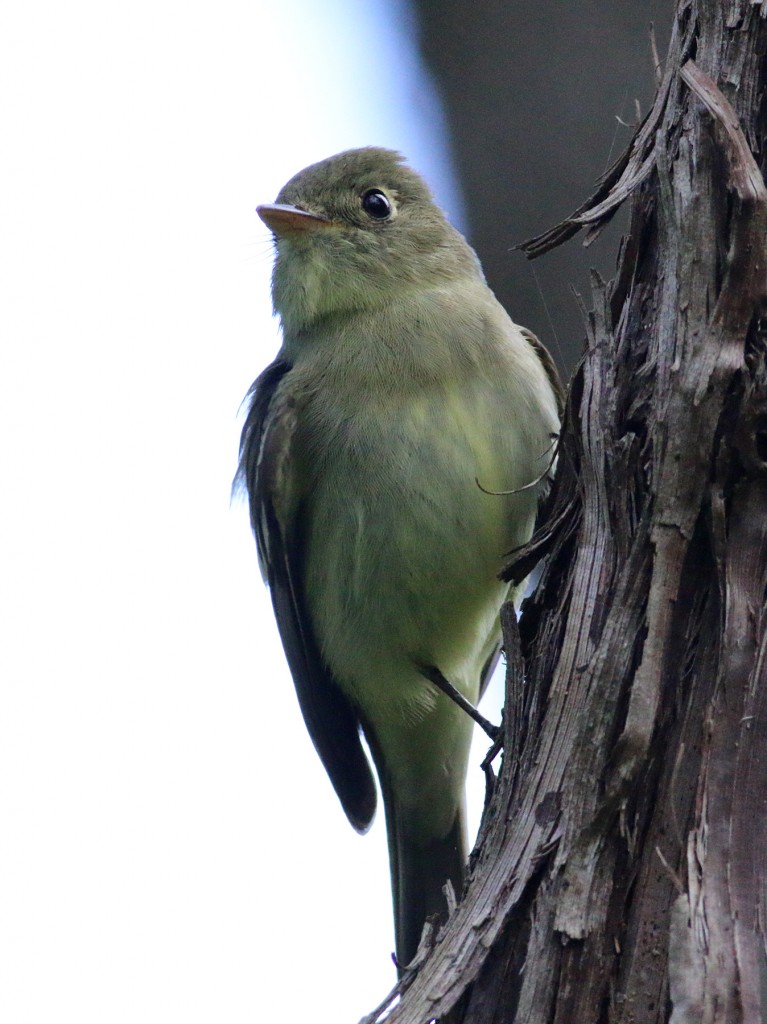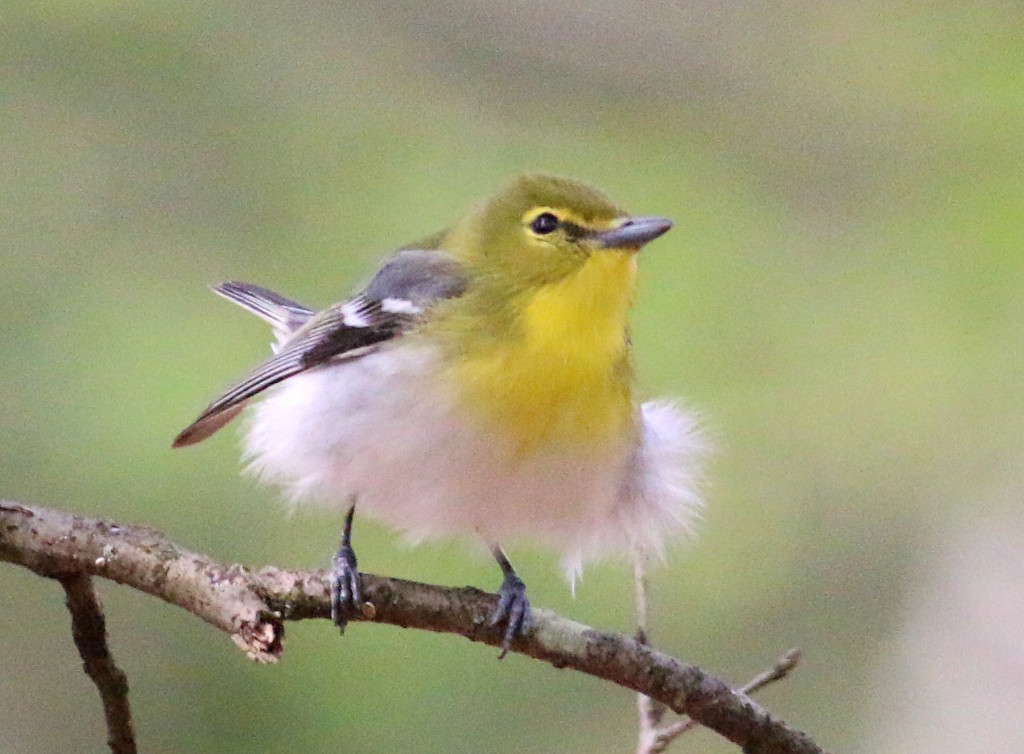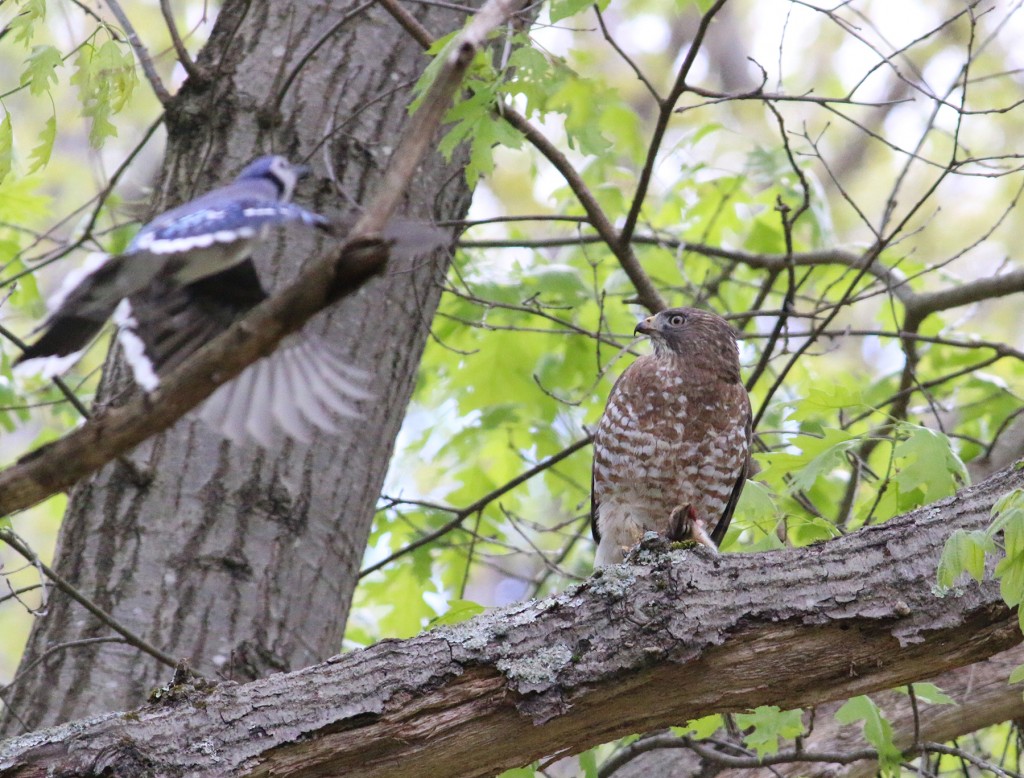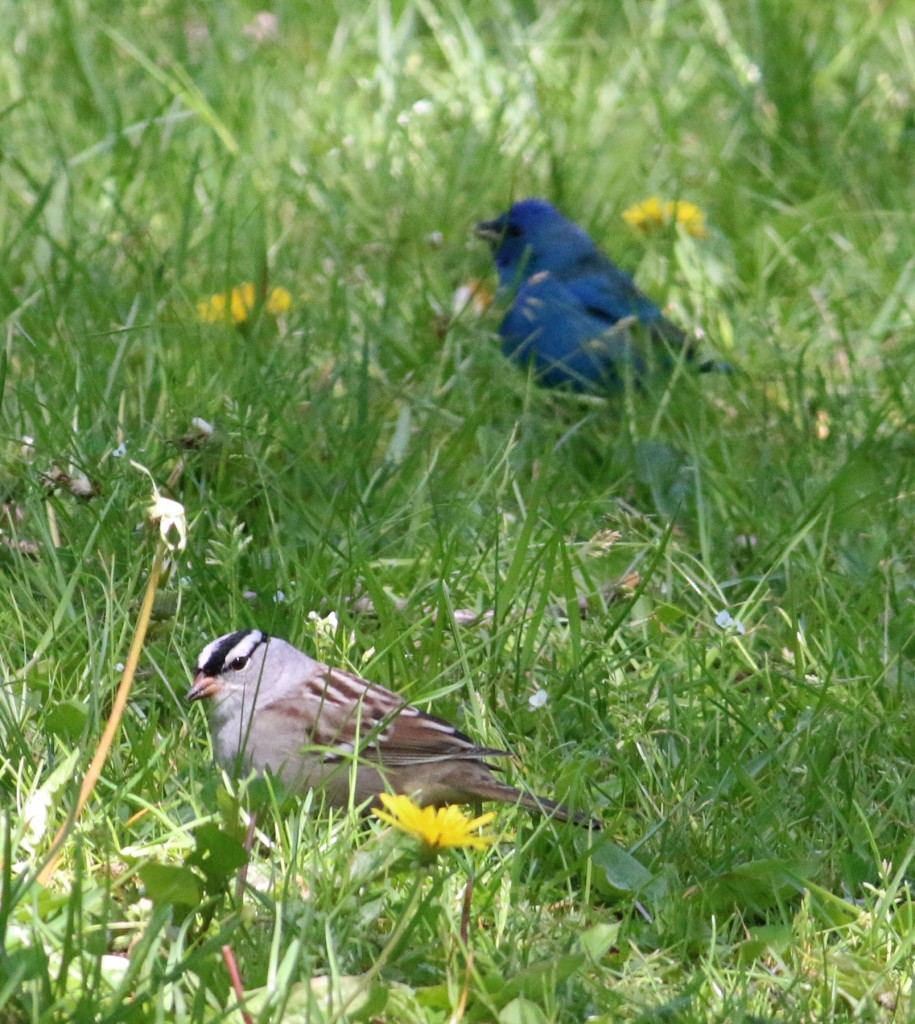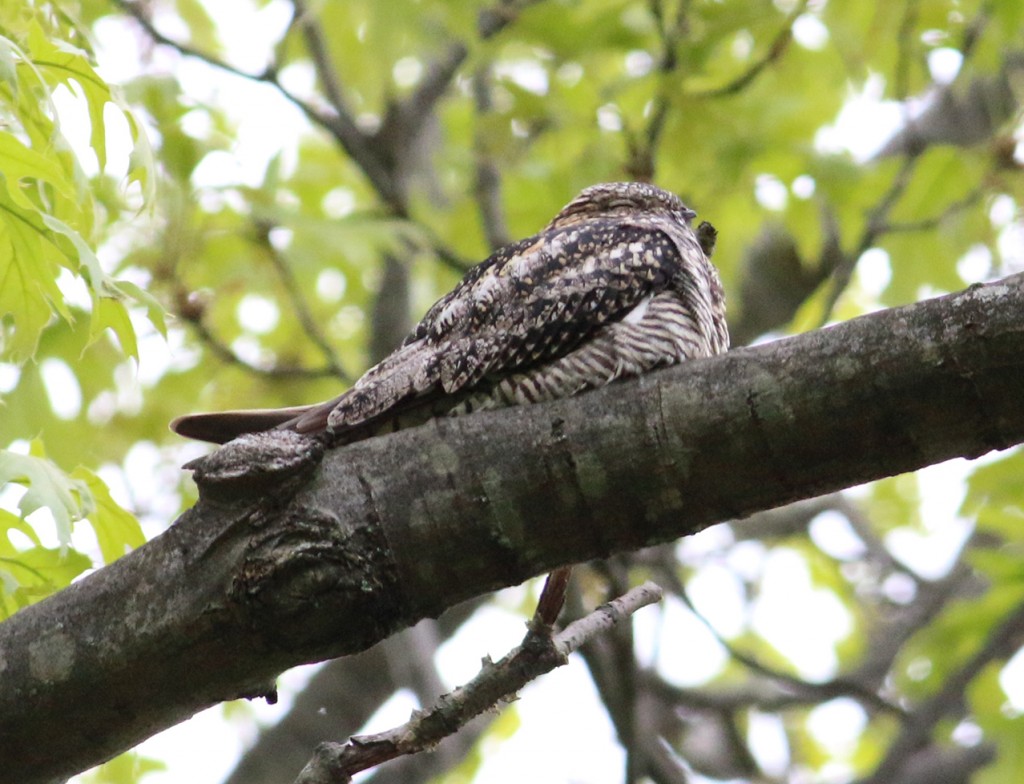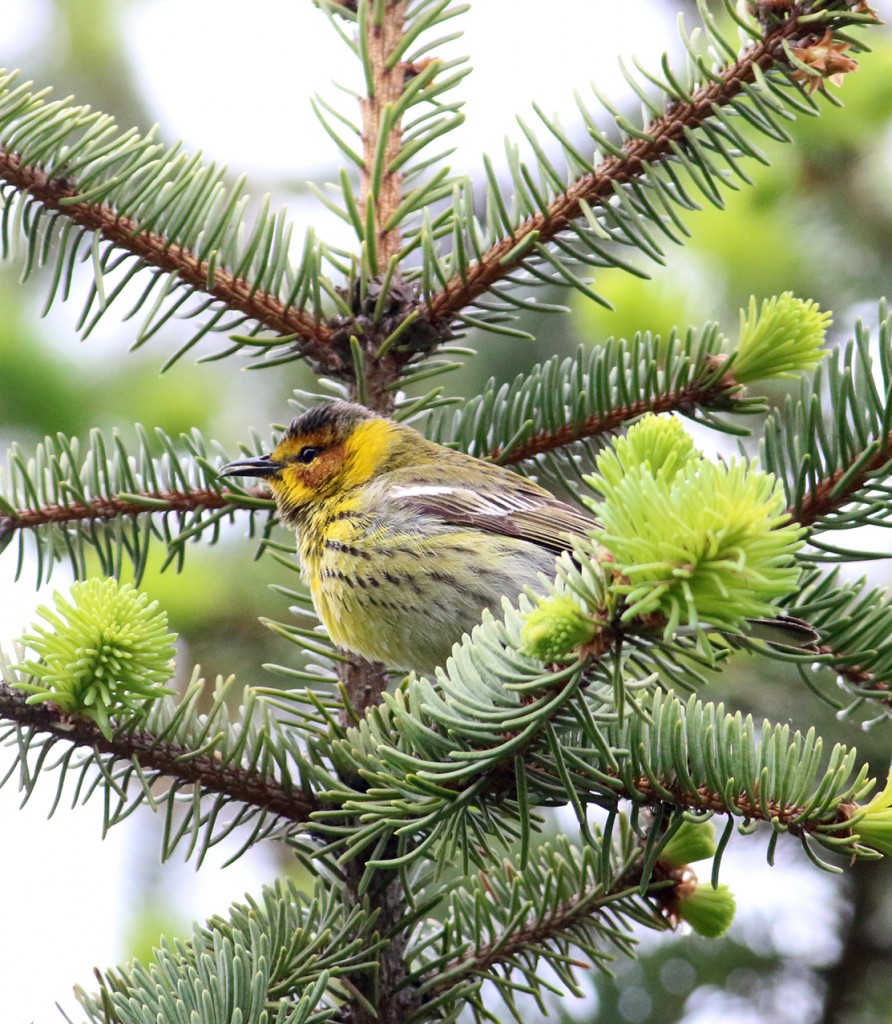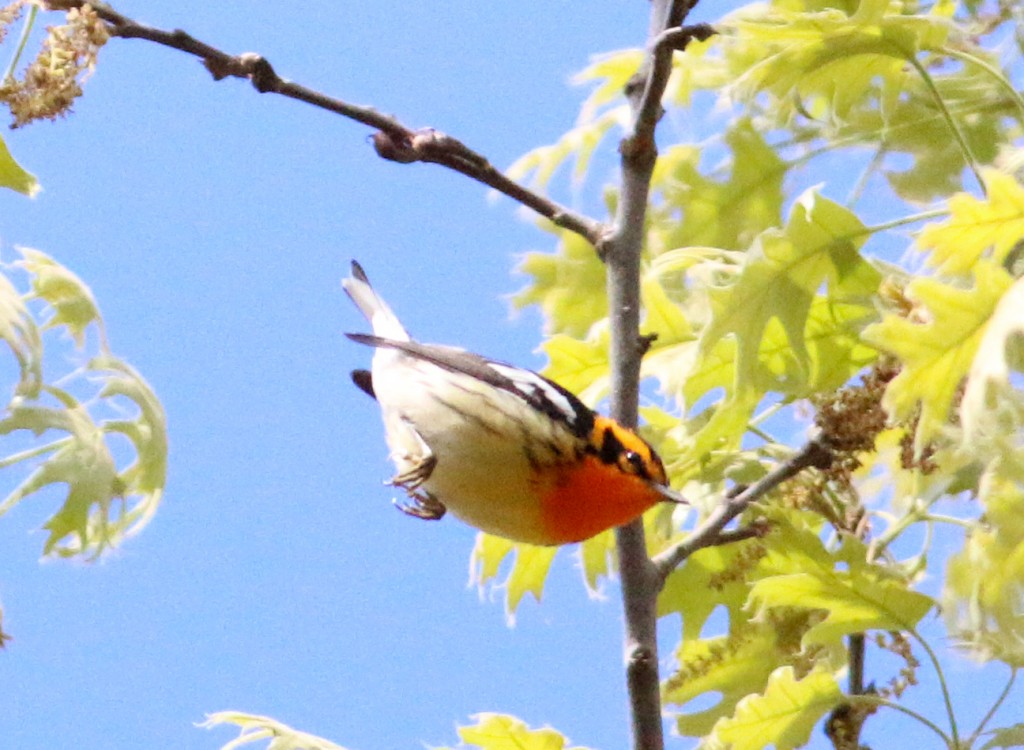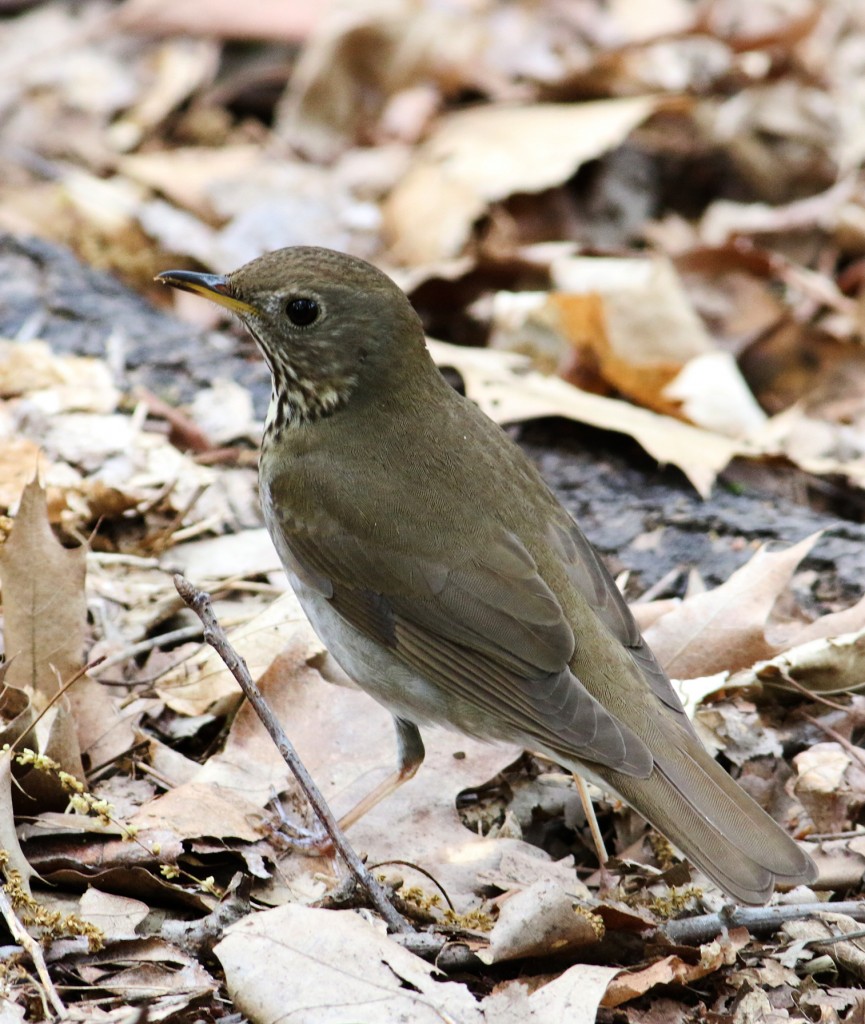I spent the past three days with brother Rich on a bit of a mini-vacation to some migrant hotspots that are a bit beyond daytrip distance from home, and the entire trip was fantastic. Our major destination was the Bashakill Wildlife Management Area near Wurtsboro, NY. ‘The Bash’ has a great reputation, and our timing apparently couldn’t have been better. Despite temperatures that hovered just a tad over freezing overnight and with occasionally windy conditions, the birds were in, and after two days I was starting to develop a blister on the finger that was operating the focusing wheel of my binoculars. (that’s a good problem to have) In particular, I saw more Bay-breasted Warblers on this trip than on any other excursion I have ever taken. Add to that a couple Blackburnians, two Mourning Warblers (thanks to John Haas and to Carol Weiss for advising us of their approximate locations), a pair of Wilson’s Warblers, plenty of Canada Warblers and Swainson’s Thrushes, singing Ceruleans, and a nice variety of thrushes and vireos included among the usual cast of spring migrants, and we were kept busy for many hours each day. Although The Bash is a wonderful place to find rarities, on days like this it’s just the numbers of migrants that makes it a pleasure to visit, and you never know what will pop into view next. On our final morning I found what I thought was a Least Flycatcher, when another birder later mentioned that they saw a Yellow-bellied Flycatcher at the same location and another one further up the trail. We were able to get better looks at that second one, which was vocalizing differently from the Least Flycatchers, nailing the identification. As we were coming back to the car for a break, we met John Haas, author of the definitive book of birding locations in Sullivan County, who explained that they show up occasionally in fall, but are rare in spring. We therefore showed John where we saw the birds, and together were able to re-find both of them again. The extent of yellow on the belly and throat appeared variable to me depending on the lighting, but it was clear that these were indeed Yellow-bellied Flycatchers. Thanks to John and to the anonymous birder for their expertise and for a mini-lesson on a tough flycatcher identification.

Our second Mourning Warbler sighting of the trip, thanks to a tip from Carol Weiss and her Rockland Audubon group who spotted it a few minutes earlier.

One of the more abundant birds at the Bashakill was Veery. Many years ago I found my lifer Veery here.

A Common Raven in flight. They are becoming increasingly common even in NJ, but it’s still fun to see that wedge-shaped tail and hear its croaaakkkkk.
After two full days on the Bash, we headed southward, for a relatively quick stop in Sterling Forest, where the highlights were point-blank views of singing Golden-winged Warblers, good numbers of Cerulean Warblers, a few Hooded Warblers, and our second and third Blue-winged x Golden-winged hybrid Brewster’s Warblers of the trip.
To finish the trip, we stopped at Garret Mountain Reservation in Woodland Park NJ. Although we arrived at 11AM, fairly late in the day for optimum birding, Garret was Garret, and the trees were hopping with birds. We roamed around the grounds, but it was barely necessary to move, as the birds were active and mobile. As it should be. You know it’s going to be a good day when the first seven or eight birds that you look at are all different species. We ended up with seventeen species of warblers here, including 2 Bay-breasted, 3 Blackburnian, 3 Cape Mays, and double digit Canada Warblers. The highlight of the day for me, however, was finding my first-ever roosting nightjar, a Common Nighthawk, alongside the road near Barbour’s Pond. I love surprises when birding. Since I had never seen a nightjar roosting, I had to check my field guide for identification, but the barring on the belly and chest, along with the clear white feather on the forward edge of the folded wing, makes for a clear identification. I love having to break out the field guide on a trip; it means something new is being learned.
